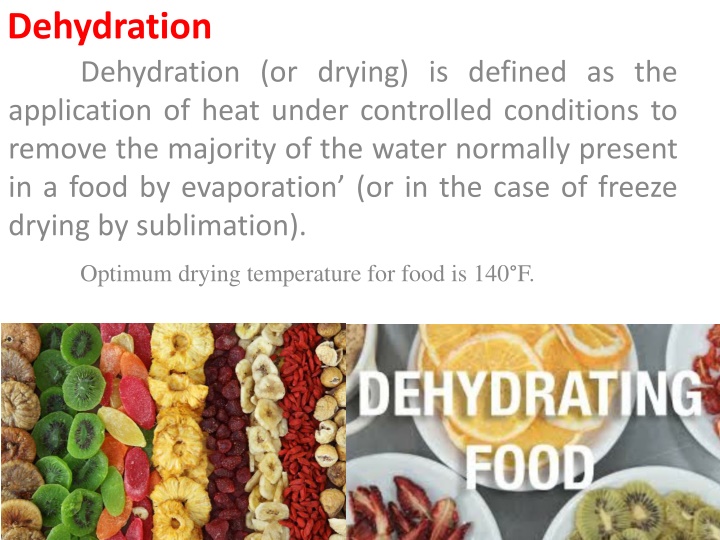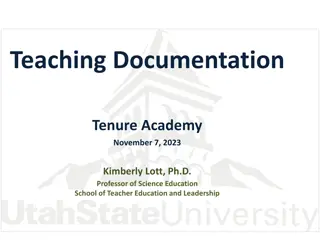
Food Preservation Techniques and Technologies
Learn about various food preservation techniques such as dehydration, thermal processing, irradiation, and hydrostatic high pressure. Understand the methods, benefits, and safety of each technology in maintaining food quality and safety.
Download Presentation

Please find below an Image/Link to download the presentation.
The content on the website is provided AS IS for your information and personal use only. It may not be sold, licensed, or shared on other websites without obtaining consent from the author. If you encounter any issues during the download, it is possible that the publisher has removed the file from their server.
You are allowed to download the files provided on this website for personal or commercial use, subject to the condition that they are used lawfully. All files are the property of their respective owners.
The content on the website is provided AS IS for your information and personal use only. It may not be sold, licensed, or shared on other websites without obtaining consent from the author.
E N D
Presentation Transcript
Dehydration Dehydration (or drying) is defined as the application of heat under controlled conditions to remove the majority of the water normally present in a food by evaporation (or in the case of freeze drying by sublimation). Optimum drying temperature for food is 140 F.
THERMAL PROCESSING Thermal processing is defined as the combination of temperature and time required to eliminate a desired number of microorganisms from a food product. The heat treatment can be done as a single preservation technique or it can be used as one step in conjunction with other preservation techniques. The extent of heat treatment varies depending upon; The specific objective concerning the preserving action of the heat treatment The nature of the product. Thermal processing operations can further be divided into ; Blanching, Cooking, Pasteurization and Sterilization A process where food is briefly heated by ; 1) Immersing in boiling water 2) Steam 3) Microwave 4)Ohmic heating 5) Hot gas
IRRADIATION Food irradiation is a cold, non-chemical process that exposes food to ionizing radiation that can penetrate food to kill, or prevent reproduction of microorganisms, insects and pests. Treatment of foods by subjecting them to ionizing radiation Ionising Radiation Radiation that has the ability to produce ions - electrically charged particles Examples: alpha particle, beta particle, high energy electron, gamma ray, and x-ray Nonionizing Radiation Does not have sufficient energy to create ions - instead tends to excite molecules without removing electrons . Examples: visible light, television waves, radio waves, and microwaves
Equipment Isotope irradiation plant: 1. Irradiation chamber 2. Control room 3. In feed conveyor 4. Outlet conveyor 5. Raw food store 6. Irradiated product store 7. Concrete shielding wall Are irradiated foods safe to eat? Foods cannot become radioactive at energies used in irradiation Below 10 kGy there are no known toxicological, microbiological, or nutritional problems
HYDROSTATIC HIGH PRESSURE Hydrostatic High pressure (HHP), a non-thermal technology, which typically uses water as a pressure transfer medium, is characterized by a minimal impact on food characteristics (sensory, nutritional, and functional). Today, this technology, present in many food companies, can effectively inactivate bacterial cells and many enzymes. HPP systems are available in two types: 1. Batch process 2- Semi-Continuous process






















